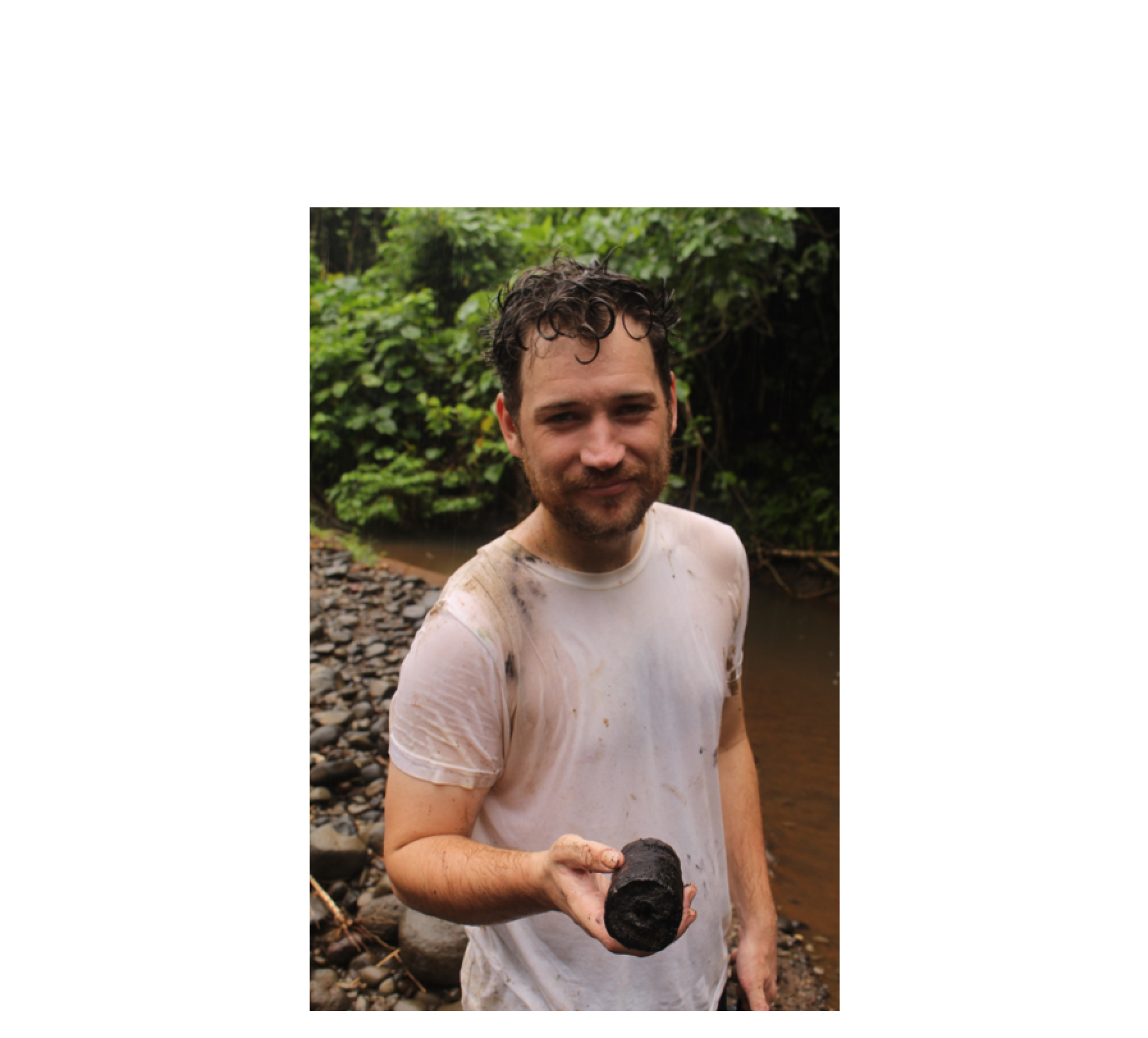A damp Robert Henderson holding a carbonised branch associated with the Kuwae eruption on Epi Island some 50kms from the crater. The perfect dating material
Secrets of Kuwae begin to be revealed
The massive eruption of the Kuwae volcano in the 1450s CE was one of the largest volcanic events in the world over the past 2,000 years, with significant impacts locally in Vanuatu, regionally and globally.
Locally, it tore apart the former island of Kuwae, leaving the islands of Tongoa and Epi as its remnants, and profoundly reconfiguring the political, linguistic and ecological landscapes of central Vanuatu. Regionally, the eruption triggered major tsunamis, transformed exchange networks and caused shifts in climate. Globally, Kuwae is credited with launching the Little Ice Age (~1450-1530 CE) and devastating economies around the world.
CHL's Associate Professor Stuart Bedford and Associate Professor Chris Ballard are leading an ARC-funded Discovery project, together with Auckland University volcanologist Shane Cronin, which aims to confirm the date and the scale of the Kuwae eruption at its source, on the islands of Epi and Tongoa.
Funding was granted in 2020 but, of course, Covid intervened. Finally, after much delay, the first serious fieldwork related to this project was undertaken in August 2022.
Dr Bedford, along with new CHL PhD student Rob Henderson, local Vanuatu Cultural Centre (VCC) fieldworker Salkon Yona, Siri Seoule from the VCC and Shane Cronin and his student Sönke Stern, undertook three weeks of fieldwork on the two islands.
Confirmation of the widely destructive nature of the Kuwae eruption were not hard to find. Some 50kms from the eruptive centre, at a village called Vaompi, on Epi Island, Bedford and Henderson identified volcanic deposits that were more than a metre thick. Cronin and Stern arrived a few days later and explained that it was indeed associated with Kuwae but also that it represented a pyroclastic flow. This is one of the most dangerous features of eruptions where a dense, destructive mass of very hot ash, lava fragments, and gases are ejected explosively and flow across the landscape at great speed at up to 800 degrees celsius. The chances of survival are almost zero.

Cronin who had just returned for two months of studying the effects of the Hunga Tonga eruption says that Kuwae was very similar in nature, but was probably about five times larger!
Bedford said that the interdisciplinary nature of the research is one its strong points. “Having volcanologists working in collaboration has been revelationary. We now have a much better idea of where people may have survived and what the landscape looked like after the eruption."
Happy to secure some transport from central to southern Epi. L to R. Stuart Bedford, Salkon Yona, Siri Seoule with smile, Sonke Stern and Robert Henderson along with a crew of four at the rear
Strong oral traditions relating to the eruption also provide important detail in relation to these aspects. As Bedford further noted, this fieldwork was also in preparation for the ANU field school which will be taking place on Tongoa Island during the first two weeks of September. “The logistics of the field schools are always the most challenging. However, on Tongoa we have managed to find a wonderful local hall which is perfect for accommodation in a village (Mangarisu) that has the only water supply on the island. It is located just above one of our areas of interest where cultural deposits can be seen buried beneath the primary ash fall. It also has excellent sea views and several kava bars!”
Over the next few years, Bedford and Ballard will be leading field schools of ANU students to work together with local communities to uncover the secrets of Kuwae. Geological assessments of the submarine crater, archaeological excavations of buried settlements, and the collection of detailed oral traditions of the eruption will flesh out our understanding of this remarkable event. This knowledge will then ground new thinking about the role of volcanoes in forcing climate change in the past, as well as providing strategies for reducing the risk of future events.
Watch this space for more on this project and its fieldwork research efforts as the secrets of Kuwai begin to unfold.